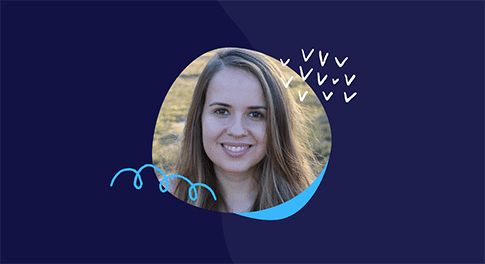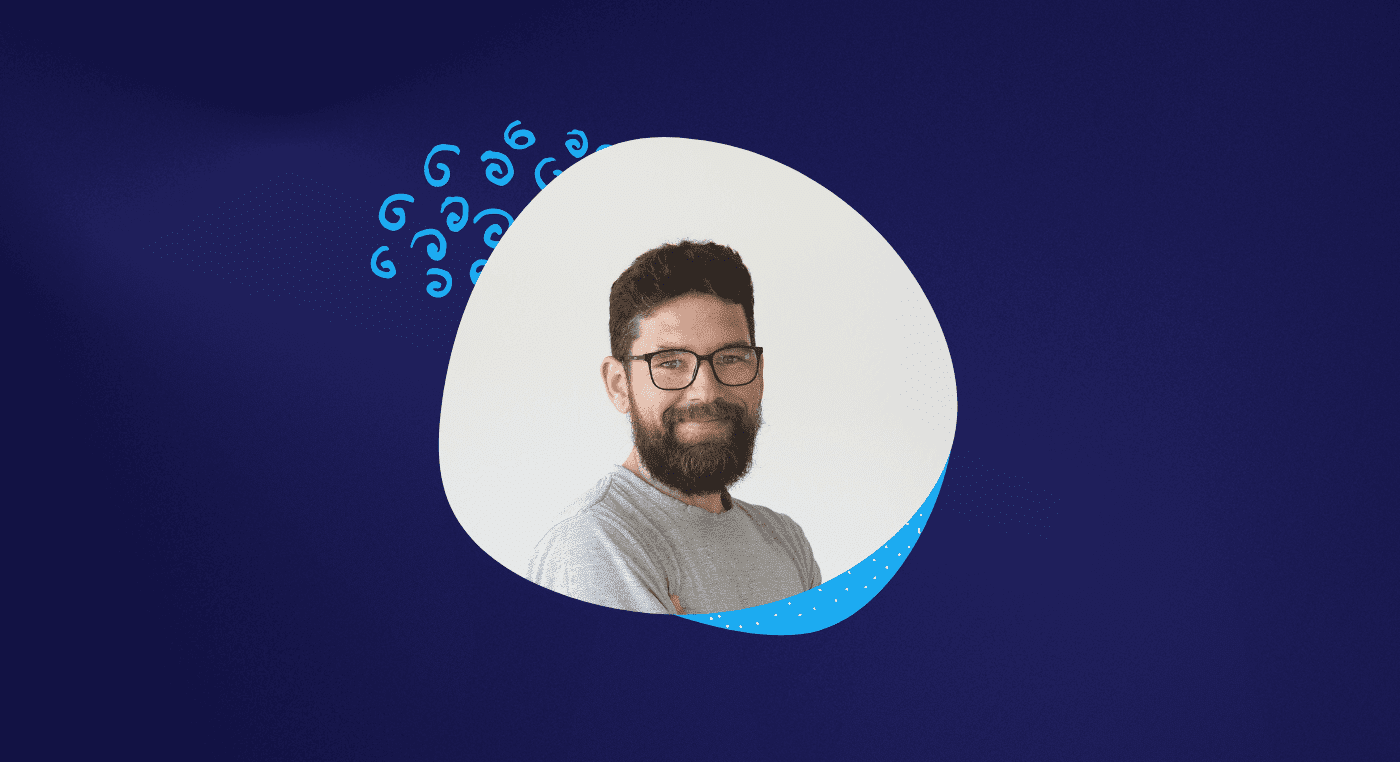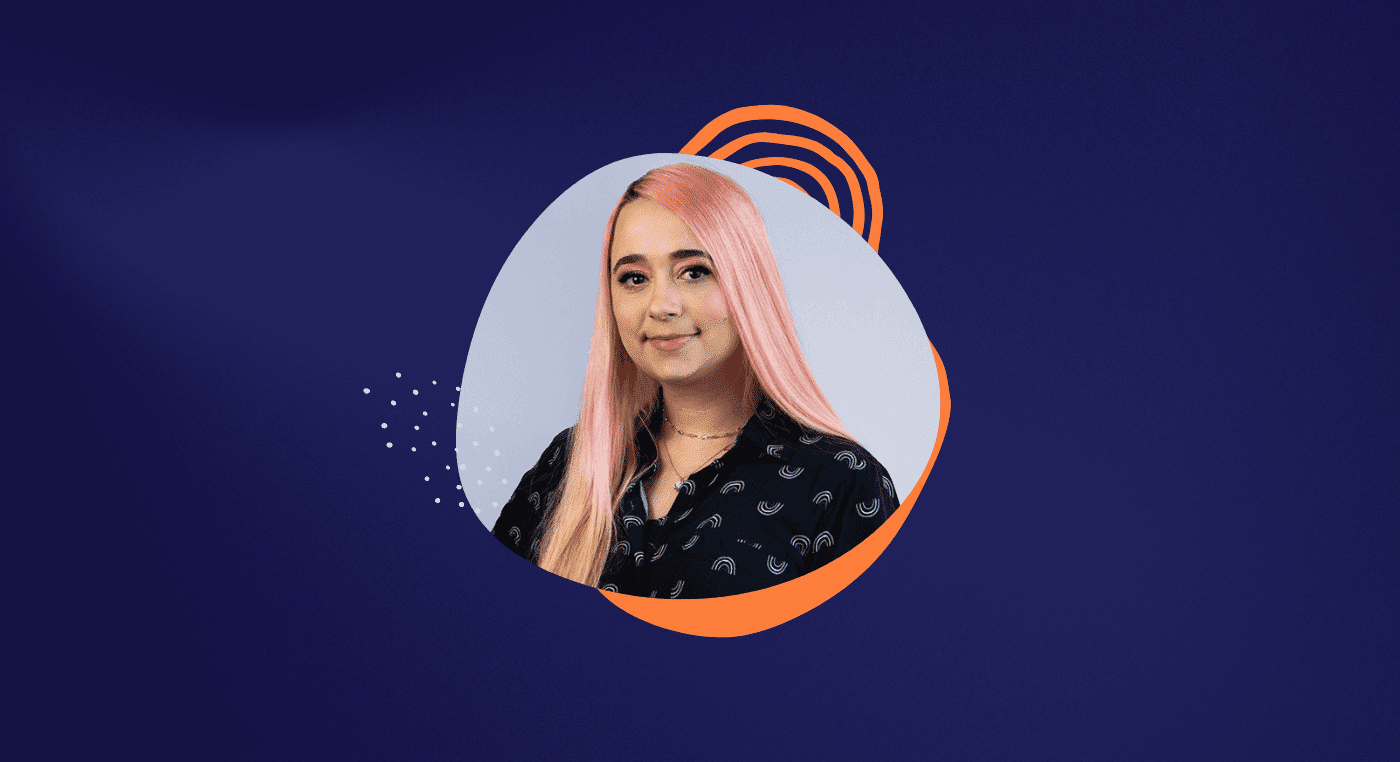In this interview, our Master Interface Design student Barbara Bottaccio tells us why she decided to change careers and transition from Social Science to UX Design.
Moreover, she shared with us the process of landing her first UX Design role.
Check out Barbara's story and get inspired!
Barbara, how are you? Please tell us about yourself!
I majored in Social Sciences in 2015, and after that, I did a Master's in the same field.
But I realized that the academic career didn't fit with the goals I was setting for myself.
After that, I got into the job market and started working as a qualitative data performance analyst at Quinto Andar.
In this area, I measured partners' performance and participated in several projects within the company.
In one of these projects, I got to know the design team better, and what they were doing was great. There was a particular connection with my academic background.
From then on, I started studying UX Design on my own to try to switch careers.
It took a while for me to find the Master Interface Design course.
After Quinto Andar, I had the opportunity to work with Product at Kroton, but it was still a digital or UX Design oriented area.
Reading Tip: UX Research Data Analysis: A Step-By-Step
What similarities do you see between UX Design and Social Science?
The methodology is quite similar.
People majoring in the humanities or social sciences understand a lot about research methodologies and human and social behavior and have a good grounding in qualitative and ethnographic research.
So, I think this background helps in UX Design; in fact, it helps more than knowing any design tool itself.
This theoretical background helped me adapt to UX and think of interesting things for this field.
Is this what caught your attention when you got in touch with the design team?
I also really liked the way they were united. Everyone was helping out, and at the same time, each had their own squad.
The design team is very strong, so there is a lot of support, exchange of ideas, etc. This way of working together caught my attention.
In addition, I really liked the idea of researching the users, their pains, and their needs. When I saw this, I decided to change my career.

How long did it take you to pivot to UX Design?
About a year and a half.
Before you joined the Master Interface Design course, how did you organize your studies?
I think I will talk more about the difficulties I felt.
I realized there is a lot of content about UX Design available on the internet, but I felt it lacked an order, like a beginner and an advanced level.
For example, one day, I would read about usability concepts, the other day about interviews, and the next day about something different.
I didn't have a clear picture of UX Design as a whole, and I couldn't absorb enough content, no matter how much I read.
So I missed having more structure in this sense, and I got confused initially. I didn't know where the UX work started and ended, where the methodologies fit in, etc.
I was also missing the practical part.
A lot of things get you confused, and this makes you a little frustrated.
These points were the ones that I had more difficulty with, but I think they were important for me to follow my path.
Getting in touch with all this content and finding a course that makes sense for you is part of the process.
How long after that you decided to join Master Interface Design and go deeper into your studies?
As soon as I left Quinto Andar and went into the product area, I started the Master Interface Design Bootcamp.
From then on, I started applying what I learned in the course to my day-to-day work as a product analyst.
That was my path. As soon as I got into the Product area, I looked for a course to help me transition to UX.
Reading Tip: Information Architecture: How to Organize UI Content
Explain a little about your role as a product analyst.
The company I worked for was in the education sector. So, I created products for undergraduate courses.
In that sense, my role was:
- to look at courses' performance;
- attract students;
- understand the level of student satisfaction with the course and the institution;
- analyze indicators;
- understand how to direct the business and transform these insights into a new product.
Therefore, I worked to capture information and developed a proposal for a new product that would be interesting for both the company and the students.
In this context, I could fit in a lot of UX Design principles besides the more strategic and business side of things.

What did you manage to apply in terms of UX Design as a Product Analyst?
Because it was a big company, most people on the board had a more business-oriented profile, meaning numbers, efficiency, earnings, and profit.
I tried to show that UX Design, and the user experience (students), were important things because they would generate the results they would like to see.
So I started conducting interviews with the students and doing qualitative research, and I got a lot of insights to implement in new products.
I was trying to incorporate this focus on the students, on their satisfaction, and to have more empathy.
These small tasks related to UX Design helped me gain more knowledge in research.
Even though I applied these processes, I still had a hard time passing a design-specific position because I didn't have that much experience with UI. This is where the Master Interface Design course helped me a lot because I had to build projects from scratch.
How was your study process?
My process was and still is quite complicated for me. I joined the Master Interface Design course at the beginning of the year, and I am still in project 1.2.
I still couldn't fully organize myself to study more efficiently.
Reconcile work with the course and personal life is very complicated!
What I do, and what might be considered a bit wrong, is to do a weekend study intensive.
I would like a daily study routine, doing a little bit every day. But I fall into this habit of studying a lot within a few days.
How did you study each level of the Master Interface Design course?
I watch all the videos, take notes, and think about how to set up the project.
Each project is unique, so it's an opportunity to learn something new and work differently.
Something very difficult for me initially, but that served as a learning experience, was taking a long time to get my first project approved from the ground up.
I think I submitted about 7 or 8 versions, and I was hoping that the approval would come faster. But because of that, my progress was very clear between the first and the last version.
In this regard, I think that more important than the number of levels you have studied is the quality you put into each project and what you learn from it.
If things get more complex within each level, in the end, the UX work will be basically the same. Of course, it will depend on the goal, but there are ten projects for you to do differently. That's how I see it, really.
I also thought I would get to level 4 of the course and get a good job opportunity.
But it turns out that things are not so linear, and they don't happen exactly the way you imagine.
I received a lot of negatives; it’s part of the game!
How was the recruitment process for your current position?
For this position, a friend gave me the link to apply. I really liked the position and had already heard about the company.
It is a mobile app for well-being, and it grew a lot during the pandemic.
I like the atmosphere of startups, and I can relate to that.
The job description was very friendly, actually. It said that it didn't matter your level; they just wanted people who could contribute. So that encouraged me to apply.
During the process, I had a direct interview with the product manager; I shared my experience and developed a case study. I did well!
The Master Interface Design course helped me a lot to structure this case!
Then I had an interview with the founder of the startup, I was approved, and received the proposal.
It was a very smooth process. It lasted about two and a half weeks.

How has it been working for this startup?
It's been very interesting!
When I joined, there was only me on the UX Design team, and now they hired someone for UI.
So, up until now, I had a big focus on UI; I helped the squads make the interfaces for the experiences. Since the app already exists, what I had to do were small things that gave me confidence, like changing a button or a space. This gave me the confidence to start doing bigger things later.
Now, I expect to build the UX Design area, establish processes, and so on. The positive side is that I have a lot of autonomy to do so, to test, create, make mistakes and do it again.
So, I'm in the process of understanding, alongside the Product Managers, what their goals are and what they want for the long term, product-wise so that I can fit the discovery and UX Design processes.
Reading Tip: Design Thinking: Creating Innovative Solutions
You started working remotely, right? How was it?
Oh, it was pretty smooth.
I think that going to therapy once a week has also helped me face the situation.
But the staff itself is nice. They are helpful, and even though they are not designers, they are always willing to help.
If I have any questions, I feel safe to ask; there isn't any ego issue or fear. So it has been a very good experience.
Of course, when you work remotely, there's a lack of a personal connection, like chatting during coffee breaks or creating a stronger bond with your peers.
But it also has its advantages, being at home and having my own routine.
How has it been to work with specific tools and UI Design since you don't have a senior designer to help you now?
I find the tools very intuitive and have had no difficulty with them.
There are a lot of videos you can watch to learn, and there is always Google to help you as well. So it wasn't a big problem for me.
Of course, when you don't have experience, it can be a little strange the first time you use a tool.
The Master Interface Design course also helped me with this because, since the very first project, you are already getting familiar with the tools.
You get the hang of it over time! Today, for example, I am using Figma a lot.
What would you tell Barbara from the past about this journey to UX Design?
Many people might answer this, but I would say to have less anxiety and take it easy.
When you start a new journey, I know you may think that you won't succeed or that the goal is still too far away. And that creates anxiety and frustration.
But things happen; it is a matter of calmly taking one step at a time.
Do the projects, create a portfolio, and think of a strategy to apply for the openings.
In the end, everything will work out; the anxiety will only wear you down.







